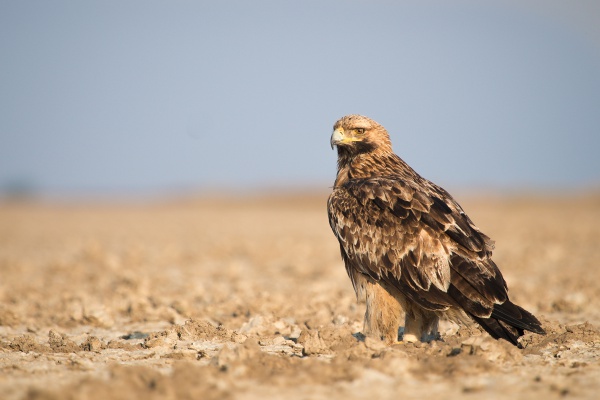Facts About Eastern imperial eagle
The eastern imperial eagle is a majestic bird of prey that inhabits southeastern Europe, Central Asia, and parts of Russia. These eagles are migratory, spending winters in northeastern Africa, the Middle East, and parts of Asia. Belonging to the Accipitridae family and the Aquilinae subfamily, this bird is renowned for its dark plumage and formidable hunting skills. They primarily prey on small mammals, birds, reptiles, and carrion.
Among the Aquila genus, the eastern imperial eagle stands out as one of the darkest species in its range. It is a substantial bird, with adults measuring between 68 to 90 cm in length and sporting a wingspan of 1.76 to 2.16 meters. Interestingly, females are larger and heavier than males, a phenomenon known as reverse sexual dimorphism.
These eagles are highly adaptable regarding their breeding habitats, which include woodlands, steppes, and semi-desert areas. They usually nest in large trees and can be found at elevations up to 1,800 meters. Their diet is quite varied, encompassing mammals, birds, reptiles, and occasionally fish and insects.
In terms of breeding, these eagles are noted for their striking aerial displays. The female typically lays 2 to 3 eggs, with an incubation period of about 43 days. On average, each pair successfully raises 1 to 1.5 fledglings. However, they face several threats such as habitat loss, persecution, poisoning, and collisions with power lines.
Thanks to conservation efforts, the eastern imperial eagle population has seen improvements in some areas since being listed as Vulnerable in 1994. However, challenges remain, particularly in regions like Lake Baikal in Russia where declines are still observed. Protecting their habitats and mitigating threats are essential for ensuring the long-term survival of this magnificent species.

 Israel
Israel